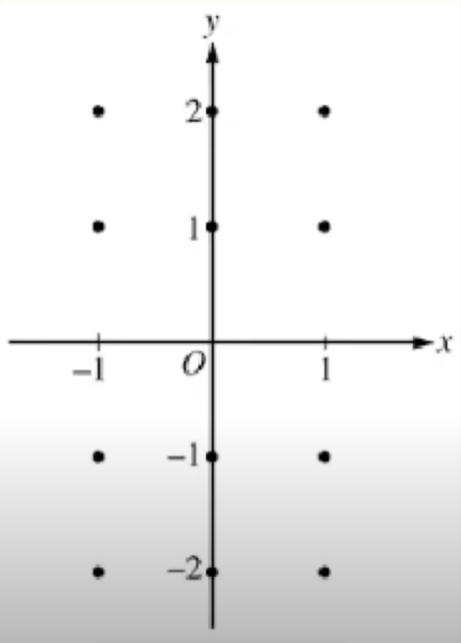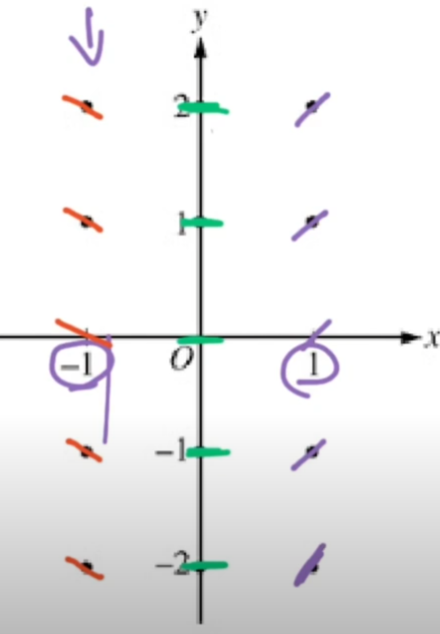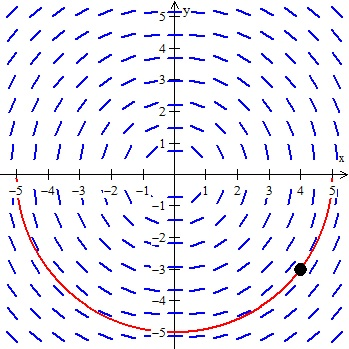
Unit 7: Differential Equations
Introduction & Slope Fields
In related rates we saw how we can model the change in one thing related to another with derivatives, and differential equations are similar!
Oftentimes, variables are not constant, so we have to represent their change using a derivative (Ex. the change in y is dy/dx)
A differential equation models the change in one variable with respect to another
Slope fields show us what the slopes look like at points on a graph

This is for the equation dy/dx = x
Remember that this is a derivative so it will show us the slope at these points!
All you have to do to construct a slope field is plug in your x/y (or both) values into your differential equation and draw that as your slope
Ex. The slope at x = -1 would be -1 (because dy/dx = x)

The AP exam might also require you to sketch a solution curve given a slope field!

All you have to do is “flow” with the slopes
Make sure you don’t cross abruptly or draw a line that doesn’t follow the slope
Because this is by hand, it doesn’t have to be exact, just try and go with the tangent lines!
Differential Equations
If you’re given a differential equation where the derivative of a function is equal to some other function, you have to solve for the original! You can do this by taking the integral (antiderivative) of both sides!
A good memory trick is that differential equation problems will be SIPPY problems
S: separate (dy and dx on separate sides)
I: integrate (remove the derivative)
P: Plus C (add your c value to your integral)
P: Plug in your initial condition
Y: Y equals (solve to find what y is)
Example: If dy/dx = 4x/y and y(0) = 5 we need to solve for y
Start by separating → ydy = 4xdx
Then integrate → ∫ydy = ∫4xdx → y^2/2 = 2x^2 + C
(Make sure you add C!)
Plug in → (5)^2/2 = 2(0)^2 + C
C = 25/2
Now set y equals → y = 2x^2 + 25/2
Unit 7: Differential Equations
Introduction & Slope Fields
In related rates we saw how we can model the change in one thing related to another with derivatives, and differential equations are similar!
Oftentimes, variables are not constant, so we have to represent their change using a derivative (Ex. the change in y is dy/dx)
A differential equation models the change in one variable with respect to another
Slope fields show us what the slopes look like at points on a graph

This is for the equation dy/dx = x
Remember that this is a derivative so it will show us the slope at these points!
All you have to do to construct a slope field is plug in your x/y (or both) values into your differential equation and draw that as your slope
Ex. The slope at x = -1 would be -1 (because dy/dx = x)

The AP exam might also require you to sketch a solution curve given a slope field!

All you have to do is “flow” with the slopes
Make sure you don’t cross abruptly or draw a line that doesn’t follow the slope
Because this is by hand, it doesn’t have to be exact, just try and go with the tangent lines!
Differential Equations
If you’re given a differential equation where the derivative of a function is equal to some other function, you have to solve for the original! You can do this by taking the integral (antiderivative) of both sides!
A good memory trick is that differential equation problems will be SIPPY problems
S: separate (dy and dx on separate sides)
I: integrate (remove the derivative)
P: Plus C (add your c value to your integral)
P: Plug in your initial condition
Y: Y equals (solve to find what y is)
Example: If dy/dx = 4x/y and y(0) = 5 we need to solve for y
Start by separating → ydy = 4xdx
Then integrate → ∫ydy = ∫4xdx → y^2/2 = 2x^2 + C
(Make sure you add C!)
Plug in → (5)^2/2 = 2(0)^2 + C
C = 25/2
Now set y equals → y = 2x^2 + 25/2
 Knowt
Knowt